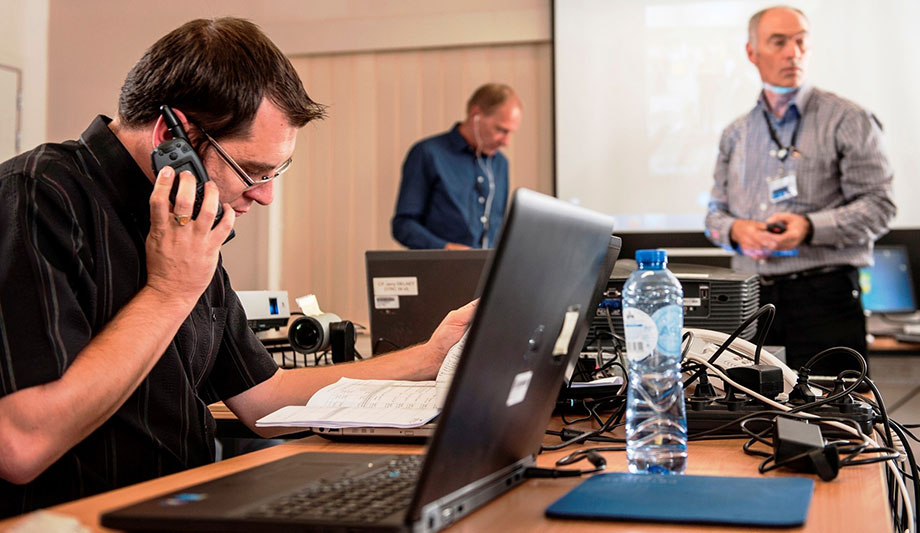To test the interaction between secure radio networks during international visits, the European Research & Development project ISITEP successfully simulated a summit in Brussels with six European countries in late September. As a result of the two-day demonstration, different mission-critical communication systems operated on common technical platforms to facilitate the exchange of information between various organisations. Airbus Defence and Space played a major role in supplying the necessary technology.
Enhancing cross-border communication
The technical set-up enabled communication between Tetra and Tetrapol systems from Belgium, France, the Netherlands, Denmark, Finland and Luxembourg. For instance, police actors protected fictitious foreign delegations as they moved through the city and attended conferences. The realistic scenario echoed the complex security coordination required during high-level missions abroad. ISITEP, the Federal Police of Belgium and the governmental network operator ASTRID initiated the operation.
“Airbus Defence and Space technology was decisive in conducting this interoperability test,” said Olivier Koczan, Head of Secure Land Communications at Airbus Defence and Space. “We supported the event together with our partners and our commitment shows that we are developing solutions to improve cross-border communications,” he added.
Two independent radio network platforms
To manage the roaming processes, the project set up two technically independent radio network platforms. One was composed of the three operative networks from Belgium, France and the Netherlands, the other consisted of four laboratory networks from Denmark, Finland, Luxembourg and Belgium. On each platform, the participants’ terminals were able to migrate from one network to another. Pivotal to the success of the demonstration was the nationwide mission-critical network of Belgium and its corresponding test network located in Brussels. Both were provided by Airbus Defence and Space and are run by ASTRID.
Rising need for secure common communications infrastructure
International cooperation between the police and emergency services in Europe has increased in recent years. Consequently, the need for a secure common communications infrastructure has become more pressing. Even though different standards from different vendors exist throughout Europe, the demonstration in Brussels showed how to bridge the gap between various radio technologies.
ISITEP aims to find a comprehensive solution for interoperability between mission-critical communications systems with different standards. The project team comprises a consortium of 15 leading companies, including Airbus Defence and Space, and academic institutions from ten countries. This three-year undertaking to strengthen the cooperation between national emergency services started in 2013 and received EU funding of around 10 million euros. The international Tetra Association as well as first response organisations from nine countries are also supporting the project’s activities.




















